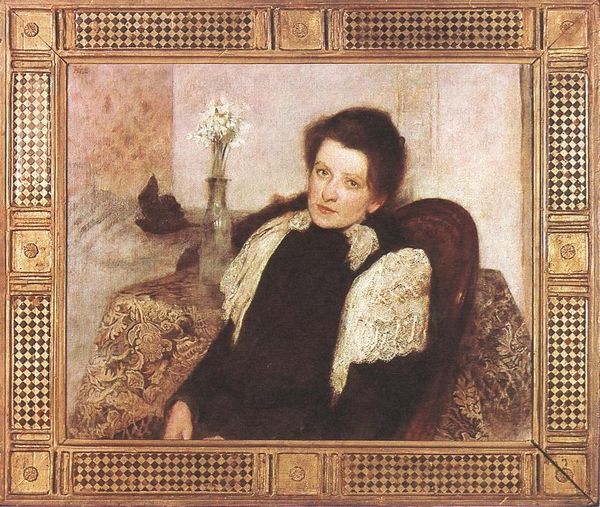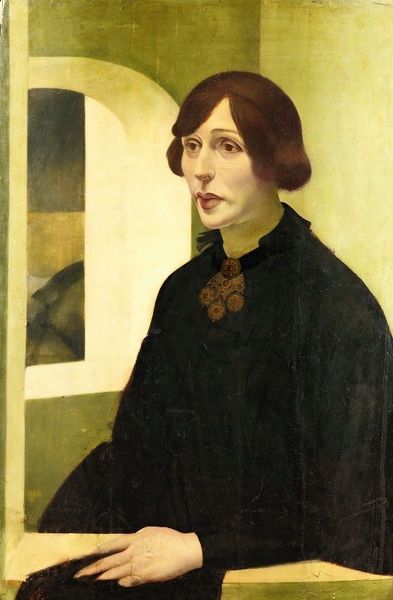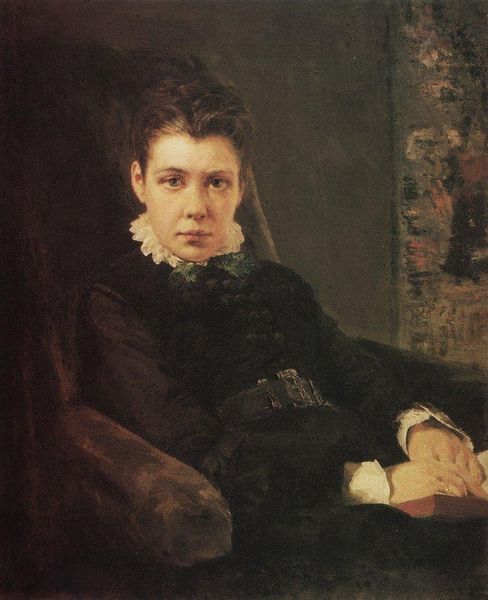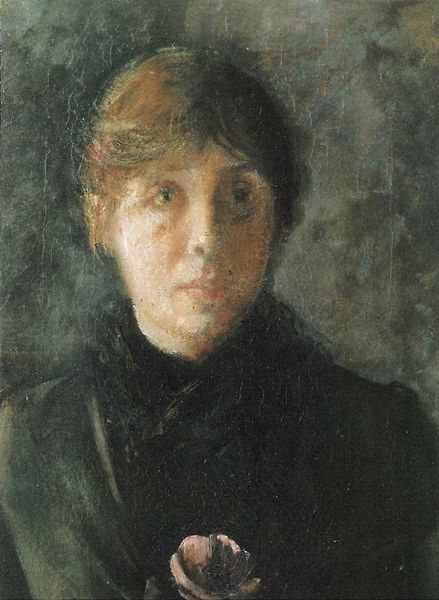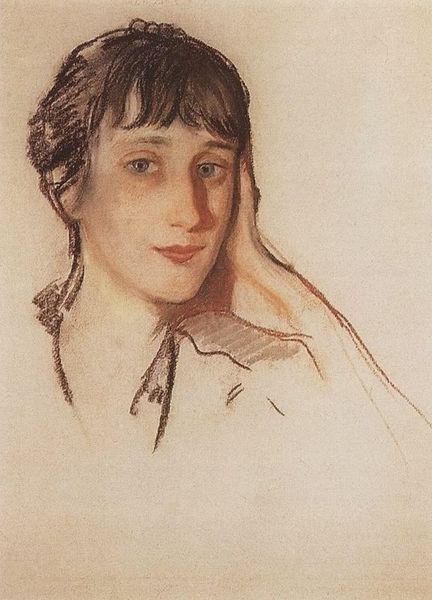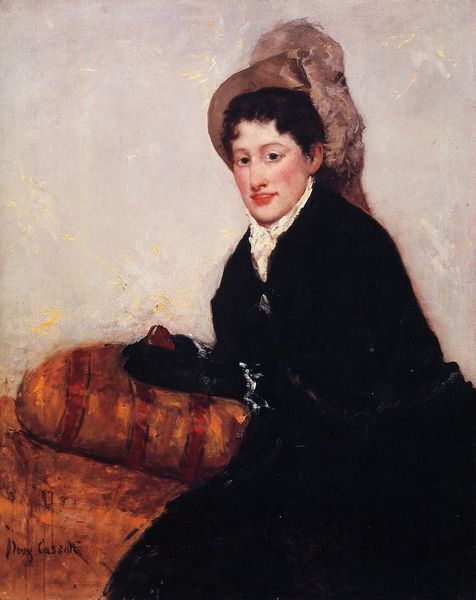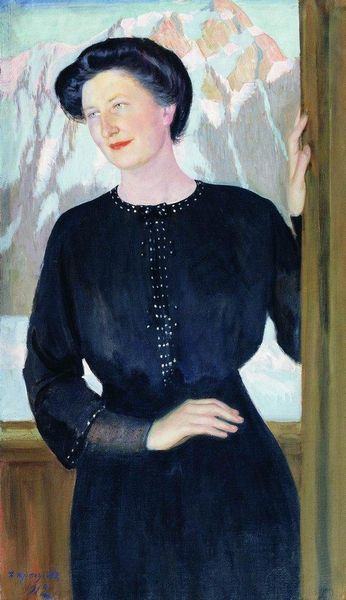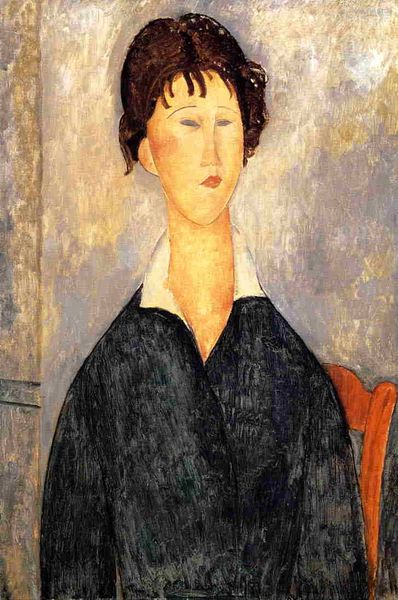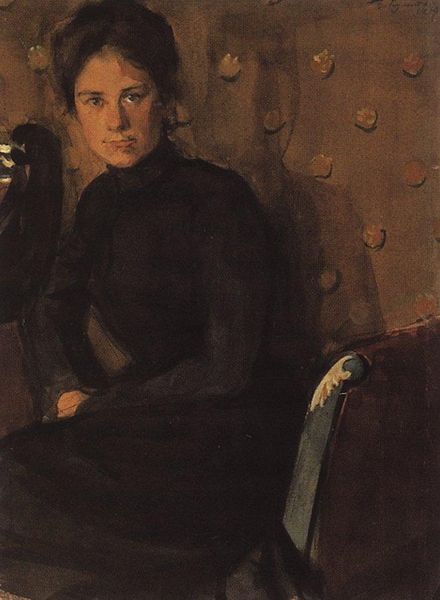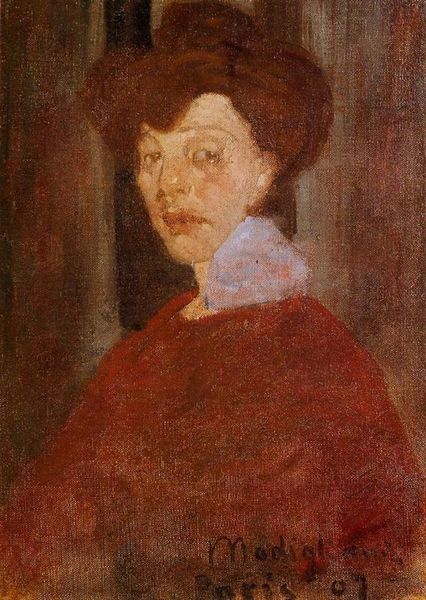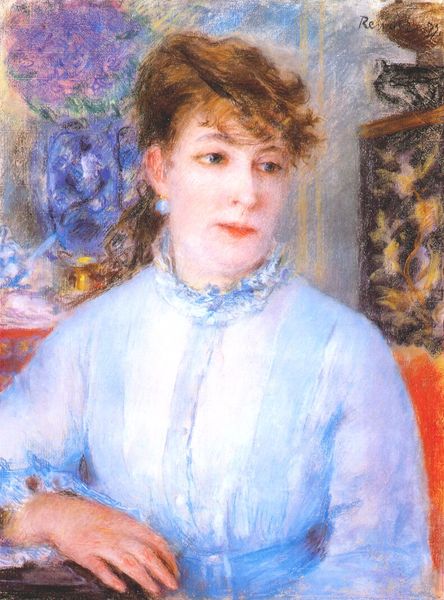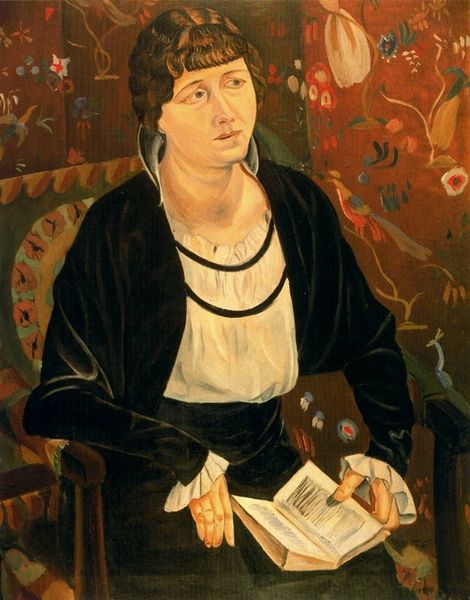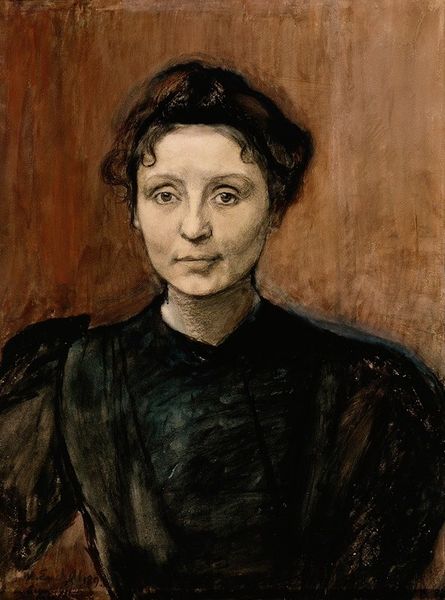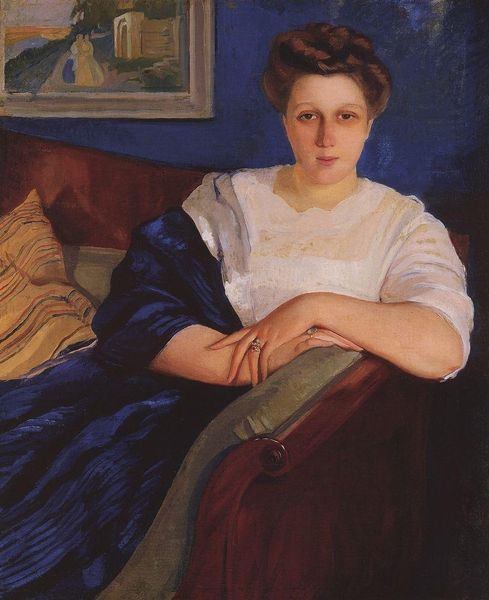
Copyright: Public domain
Editor: We’re looking at Berthe Morisot's "Portrait of Edma Pontillon," created in 1871 using oil paints. It strikes me as a very intimate, almost melancholic piece. How do you see it? Curator: Well, consider the materiality. Morisot's loose brushstrokes, especially in the fabrics, defy the polished academic styles favored at the time. The visible brushwork is not about hiding the labor; it is highlighting it. She uses cheaper canvas which absorbs a great deal of paint so you are also dealing with economics. What do we make of that choice? Editor: It feels very modern, less about depicting wealth and more about the immediate experience of painting itself. So the fact that it's oil on canvas, but using techniques that break from tradition, challenges conventional notions of what portraiture could be. Curator: Exactly. And let’s not forget the social context. Morisot was a woman, working within a male-dominated art world. Her choice to focus on domestic scenes, to depict women and the interior life, often overlooked or deemed 'lesser' subjects, becomes a powerful statement about value and visibility. Consider what sort of labour was accepted or dismissed in art practices and gender expectations. Editor: So you're saying the painting's value comes not just from its aesthetic qualities, but from its position within these intersecting social and material constraints? Curator: Precisely! The cost of materials, labor practices, and Morisot's own status – these elements intertwine and inform the final artwork. It invites us to consider not just what the painting depicts, but how and why it was made. Editor: It’s really interesting to see the work as an intersection of material realities and societal expectations and challenges traditional value hierarchies. Curator: Yes. This helps us look at Morisot and her portraiture in a different and insightful manner.
Comments
No comments
Be the first to comment and join the conversation on the ultimate creative platform.
